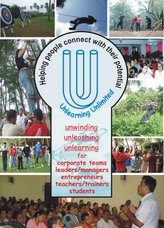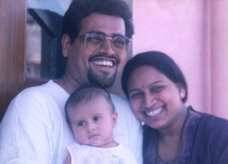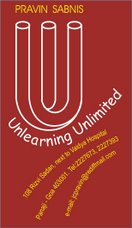Last Thursday, poetry films were screened at the International Centre, Goa. In the discussion that followed a couple of youngsters candidly expressed their inability to understand all the films. So often, so many of us believe that we do not possess the ability to “understand” works of creativity like poetry, paintings, films, plays, etc. And hence we find a ‘disconnect’ with creative arts, music, dance, politics, technology… the list can go on and on!
But do we ‘understand’ everything we indulge in? Let’s take the case of our major national craze – cricket! Most of us would not ‘understand’ the difference between a googly and a chinaman or between swing and reverse swing. The spectators of cricket or so many other sports enjoy the game for various other reasons like the excitement of competitiveness, the face-off between brute strength and skilful grace, etc.
Before we ‘understand’, we have to ‘experience’. Edison once stated that the thought of understanding comes from the two simple words under and stand. Hence it is necessary to undergo new experiences with an open mind and ‘stand’ within that experience for a sufficient period so as understanding to occur. The more we ‘stand under’ a happening, we will be better at comprehending the facets of that experience.
We were all born to ‘understand’ but we are conditioned to believe that ‘understanding’ is a talent that is belongs to a select few. As babies we could appreciate colour, shapes, sound and movements because we would approach everything with an open mind and an inquisitive approach. After all, for each of the things we understand over the years… the lesson is simple: we learnt to crawl, before we could walk and run.
‘Understanding’ is not a consequence of inborn aptitude…
We need to BE BETTER at keeping an open attitude!
- Pravin K. Sabnis
Monday, March 30, 2009
Monday, March 23, 2009
THE UNCERTAINTY OF DEATH
Some stories that we read in our childhood seem meaningful much later in life. One such story told the predicament of a young man seized by an existential dilemma. He felt life was futile since death was not in his control. He believed that anything initiated by him could be in vain if death were to make its uninvited appearance. He wondered in the wisdom of living under the sword of uncertainty of death.
Eventually, the young man decided to commit suicide. As he walked to the cliff (he intended to jump off) his mind’s eye began looking back at his life. He revisited his various experiences from childhood to the present. He still had not reached the cliff, so his mind moved to the future. He began visualising the reactions of people to his death. His imagination projected a common response, “Look, he has killed himself!”
The young man realised that his demise would be of his own choice, by his own method and at his own selected time and place. He immediately realised that he had a possible control over his death. The thought exposed him to a wider consciousness that the glorious uncertainties of life were more empowering than the destabilising uncertainty of death. He turned back from his tracks and moved on to take head-on the challenges of life… and death!
So often, we give up on doing things we like to do just because we are convinced of the certainty of failure. Surely this is similar to giving up on life, just because death is a certainty. It is necessary for us to understand that we can be the ones who fail ourselves. It is this succumbing to failure that must make way for steady resolve. Let’s not worry too much about failure or death and the uncertainties that surround them. We must connect to our passion and purpose in life.
It is on this very day that Bhagat Singh died at the age of 23. Alexander died at the age of 32 years. Mozart died at the age of 35. Swami Vivekananda died at the age of 39. Let’s learn from the many examples of people who were able to live worthwhile lives, despite dying young. Bhagat Singh wrote, “Jeena hai tho marna seekho yaaro”. (to live we need to learn to die)
Do not surrender to death before its coming…
Let’s BE BETTER at empowering our living!
- Pravin K. Sabnis
Eventually, the young man decided to commit suicide. As he walked to the cliff (he intended to jump off) his mind’s eye began looking back at his life. He revisited his various experiences from childhood to the present. He still had not reached the cliff, so his mind moved to the future. He began visualising the reactions of people to his death. His imagination projected a common response, “Look, he has killed himself!”
The young man realised that his demise would be of his own choice, by his own method and at his own selected time and place. He immediately realised that he had a possible control over his death. The thought exposed him to a wider consciousness that the glorious uncertainties of life were more empowering than the destabilising uncertainty of death. He turned back from his tracks and moved on to take head-on the challenges of life… and death!
So often, we give up on doing things we like to do just because we are convinced of the certainty of failure. Surely this is similar to giving up on life, just because death is a certainty. It is necessary for us to understand that we can be the ones who fail ourselves. It is this succumbing to failure that must make way for steady resolve. Let’s not worry too much about failure or death and the uncertainties that surround them. We must connect to our passion and purpose in life.
It is on this very day that Bhagat Singh died at the age of 23. Alexander died at the age of 32 years. Mozart died at the age of 35. Swami Vivekananda died at the age of 39. Let’s learn from the many examples of people who were able to live worthwhile lives, despite dying young. Bhagat Singh wrote, “Jeena hai tho marna seekho yaaro”. (to live we need to learn to die)
Do not surrender to death before its coming…
Let’s BE BETTER at empowering our living!
- Pravin K. Sabnis
Subscribe to:
Comments (Atom)



